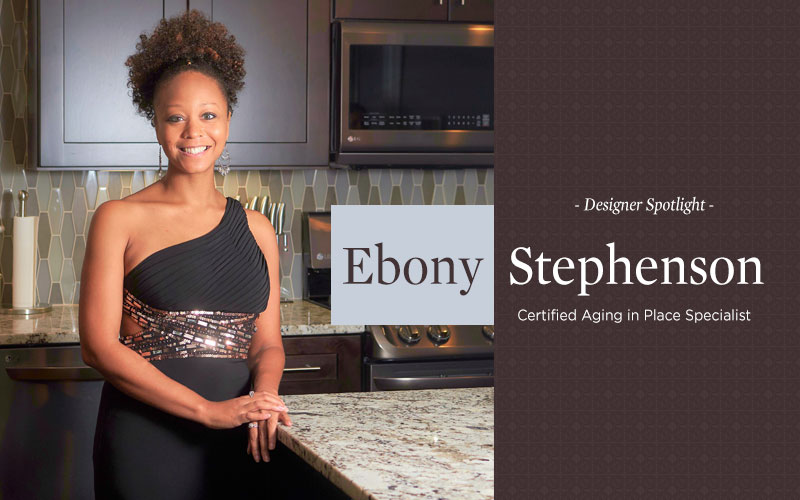Applying best lighting practices for active adult living.
It's a fact: our population is aging, and how and where older people can live meaningful, independent lifestyles is a hot topic. More than ever, as people age, they wish to stay in their homes, where they've built cherished memories, and where they are part of a neighborhood or community.
According to the American Lighting Association (ALA), a 60-year-old needs twice as much light as a 30-year-old to perform the same seeing task with equal speed and accuracy.
Enter the Certified Aging in Place Specialist (CAPS). These interior designers focus on modifying their client's home, designing comfortable, accessible and safe spaces so their clients can age in place. 34 - year old Ebony Stephenson, of Designs by Ebony in Newport News, VA has built her career creating beautiful homes not only for older clients but also for those who may have disabilities and other reasons to need modifications made to their homes.
"Even more important than the energy savings, using LEDs means that my clients don't have to worry about climbing on ladders to change bulbs, which can lead to slips and falls," said Ebony.
Although a young designer, Ebony earns the trust of her often - older clients because she identifies with their struggles - Ebony has fibromyalgia, a painful condition which limits her mobility.
As a Certified Aging in Place Specialist, Ebony offers the reassurance that she will help her clients make the choices that will help them stay in their homes safely and securely. She's a bit unconventional in that she often meets with clients after hours so that she can observe how they move and work in their home. She takes the time to measure their height and arm reach, and may watch them prepare a meal, and then plans the best modifications for their needs and budget.
RECESSED TRIM LED
MINGLE LED
HAVEN
LED STEP LIGHT
Lighting a home to meet the requirements of older eyes is near the top of the list of remodeling priorities. Ebony recommends using LED lighting, either as integrated LED fixtures or fixtures fitted with LED replacement bulbs, as they can last for decades. "Even more important than the energy savings, using LEDs means that my clients don't have to worry about climbing on ladders to change bulbs, which can lead to slips and falls," said Ebony.
Light levels are critical too, especially in the kitchen. Ebony uses layers of light, starting with recessed LED fixtures in the ceiling and adding undercabinet lights and pendants for task lighting over work surfaces. Bulb colors and temperatures need to match. "Make sure the color of the bulbs is correct for the room's purpose, and that temperatures of the light match. You can design the prettiest kitchen, and it can be ruined without the right lighting to highlight it."
Increased sensitivity to glare is another issue for aging clients, and Ebony solves this by installing honed, rather than shiny countertops and choosing appliances that are finished in a matte color to cut down on reflected glare.
"Often, bathrooms do not have a window to let in natural light, so proper lighting for makeup application and other tasks is essential."
In the bathroom, Ebony suggests installing overhead lighting on the ceiling of the shower stall and tub area to give clients added light for washing and grooming.

